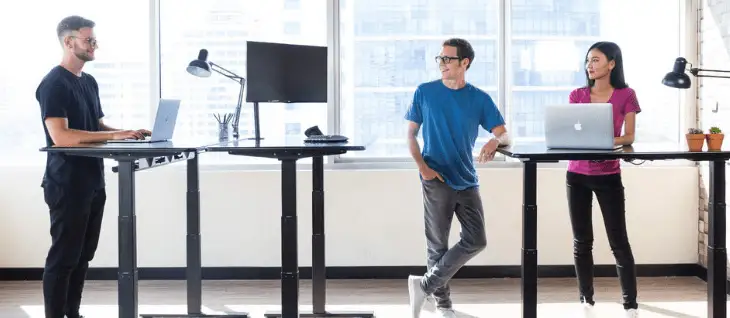Improving Employee Experience as they Return to the Office
The well-being of employees has never been more critical. Employee experience, of course, refers to their interpretation of their journey at work. It involves all aspects and
Read more
Has there EVER been such an emphasis on wellness at work? We’ve talked about work-life balance for years – but coronavirus and the potential perils of returning to work have made it a top issue for today’s workplace leaders.
And – perhaps for the first time – businesses are putting a genuine economic value on worker health and wellbeing.
For example, the newly-published Asian Development Report for 2020, says wellness measures like creating a work environment that emphasizes healthy habits can contribute to an area’s economic recovery.
Makes sense. Sick or scared workers can’t be productive – and with the UK government urging workers to work from home once again where appropriate, health reaffirmed its place at the top of the agenda.
But what coronavirus and the public response have also shown is that a one-size-fits-all is no way to create a successful return to work strategy.
One person’s normal can be another person’s stress-trigger.
So organizations cannot adopt a cookie-cutter approach in this sensitive area.
Giving employees the confidence that they can come back and work in safety and enjoyment requires a personalised approach and will differ for every workplace.
Working from home needs to be part of a balanced approach, which genuinely responds to:
We’ve already seen many different approaches to returning to the office – workers in bubbles, or on staggered rotas or even shifts. One major international organization even offered cash to employees who come into the office.
Truth is, many workers who want to come back to the office do it for the buzz. For the laughs, the collaboration, the learning – all things we struggle to achieve by video alone.
So how do we focus on these very human elements, and support everyone’s efforts to create a workplace that works?
Supporting workplace wellness
Any work from home strategy needs to be tailored with wellness in mind.
So if a person lives on their own, is a bike ride away from the office and needs the office set up for their wellbeing and productivity, why mandate following a rule?
This is one area where one size definitely does NOT fit all.
It’s far better to create levels of flexibility that enable a close match to the real situation and promote the best combination of safety and mental health.
Acas, the arbitration and conciliation service, has advice on how to spot potentially declining mental health in your employees, and warns that working from home can be both isolating and challenging.
It recommends supporting worker wellness by:
Good people management is crucial of course – even more than in pre-Covid working scenarios.
And in the current situation, technology can provide some serious help.
For the time being at least, workers will be thinking very hard about their own personal circumstances before they journey into the office.
To give them the confidence to make that move, your response needs to be tailored. Workspace technology such as desk booking software can underpin your efforts in a number of ways.
1. Securing a workspace: selecting and booking a desk before setting off for the office via a mobile app gives your employee peace of mind that they can enter the office and not have to wander around looking for somewhere to sit.
2. Soothing safety concerns: The desk booking software app shows when a space has been most recently cleaned and sanitized.
3. Checking in contactless: Each reservation generates a QR code that the worker uses to check in and out of the reserved space.
4. Collaborating with colleagues: Workers can choose to book space where they are co-located with colleagues while they are working on the same project – it’s a safe way to collaborate.
5. Hybrid meetings: Workspace technology makes it simple to organize meetings where some people are present and some virtual – even in different locations and time zones. A great way to keep a remote workforce in close touch.
6. Managing visitors: Keeping your workplace safe is not just about managing your employees – it’s about visitors and contractors too.
Workspace technology provides safeguards ranging from zero-touch check in and out at reception to digital signage that guides visitors straight to the appropriate area of the building.
Future planning
We know there’s nothing certain about this crisis, and workplaces around the world will have to continue to respond flexibly as requirements evolve and change.
That doesn’t mean organizations should be relying on guesswork, however – and this is another area where workspace technology is providing important assistance.
Capturing data on workforce movements and workspace utilization as they ebb and flow provides information for making good strategic decisions – see our latest blog on data supported decision making.
Is the world of work changed forever?
Probably yes – even when the threat of coronavirus recedes. Surveys worldwide show that people like homeworking and organizations have found it surprisingly viable.
Forcing organizations to focus on worker wellbeing as an important economic factor will also continue to create changes. Wellness will hopefully keep its place high up the corporate agenda.
In the meantime, right now the focus for every business needs to be on evolving a where-to-work policy that reduces risk in all areas; virus exposure and wellness in particular.
If you don’t have the technology support you need, now’s the time to do it. It’s one way to make sure these troubled times create a positive operational legacy that will continue to pay off no matter how the pandemic pans out.